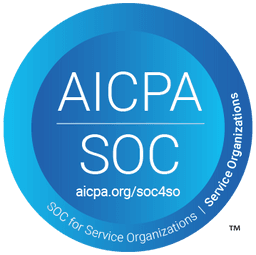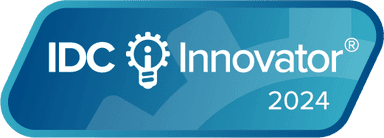Pricing StrategyJan 23, 2023
How to improve Net Revenue Retention (NRR), according to a SaaS finance expert
Are you looking to boost your SaaS company's net revenue retention but unsure where to start? This blog will provide you with strategies to improve NRR. By breaking up the ways to improve NRR into 2 main categories. Read on for more.
When it comes to SaaS, most experts agree net revenue retention (NRR) is the most important metric for rapid and sustainable growth. Why is this? According to Todd Gardner’s popular guest post on the m3ter blog, “Usage-based pricing is the best way to drive Net Revenue Retention”, it’s because NRR
indicates both the growth and stability of a company’s revenue stream - and those are the two biggest drivers of any company’s valuation.
Here’s how NRR is calculated:
Essentially, NRR just measures the percentage of recurring revenue that the company retains from existing customers over a specific period of time.
With so much riding on one single metric, SaaS companies everywhere are constantly searching for ways to boost their NRR. In this article, we’ll cover 8 ways to improve this metric.
How to improve net revenue retention
There are two main ways to increase net retention:
- Retain more customers (gross retention), or
- Sell more to existing customers (expansion)
We’ll break up the ways to improve NRR into these two categories.
Improving NRR by retaining more customers
There are, of course, many ways to improve gross retention/reduce churn – especially important as we face what Todd calls “a coming wave of churn.” However, every company is different, and what works for another business may not work for you. We’ll cover a few of the more common methods here:
1) Prioritize customer success
Providing great customer service through your Customer Success team is the most obvious way to minimize churn. Happy customers remain customers. Here are a few ways to improve the service your customers receive when they interact with the company:
- Be friendly and listen – No one likes talking to a grumpy customer service rep. Ensure your team is trained to treat customers respectfully and to actually listen to their concerns.
- Act quickly – The experience customers have with your service reps is highly dependent on how quickly you can assist them.
- Make them feel special – Customers should feel like you care when they interact with the company. Send them helpful resources and work hard to keep them engaged.
It’s likely your company might deal with more challenging customer interactions during a time of budget cuts. Following the advice above can ensure you don’t lose customers for simple, preventable reasons.
2) Optimize onboarding
Onboarding is your customers’ first interaction with the company and product, and it should be seamless. Having a smooth onboarding journey shows the customer they made the right choice and allows them to start using your tool and gleaning all its benefits right away.
3) Collect feedback
Customer feedback should be collected on an ongoing basis in a variety of forms. You should use more structured formats like a feedback survey or NPS (Net Promoter Score) throughout the year, but anyone coming into contact with the customer can also collect any feedback they may have in the moment. Keeping an eye on what customers are saying can help you spot problems early and “save” the customer before they churn.
4) Reevaluate your target market
If your NPS is consistently low, it could mean you’re targeting the wrong ICP (Ideal Customer Profile). Consider going back to the drawing board and adjusting your ideal audience, so your sales and marketing teams can actually target the right users.
As you work to retain more customers and reduce churn, keep in mind this key point from Todd:
Gross retention is subject to diminishing returns. Some churn is inevitable, and as a company reaches its maximum potential retention level, more and more resources will be required to retain those last few customers. Every industry has companies that go out of business, and all SaaS companies have a customer or two they will lose no matter what they do.
Improving NRR by selling more to existing customers
Ways to expand your revenue among existing customers include:
1) Upselling
Upselling existing users can take a variety of forms. For instance, maybe you offer a free trial or free level for low usage. To upsell these customers, you can use modals to push them to upgrade when they want to perform a task that is unavailable (or limited) in their free account.
For example, Calendly limits users with free accounts to one event type. If users want to have more than one even type, they need to upgrade.
Of course, you can upsell paying customers as well. This could be through an upgraded account level, add-ons, or adjacent products. Your CSMs and Account Managers are important here, as they can help customers see the need for additional seats, features, or usage. With PLG (product-led growth), some of that upselling can occur directly within the tool (i.e. without a sales interaction), potentially timed to major milestones or “wins” when the value of the product is top of mind for the customer.
2) Trials and FOMO
Free trials aren’t just for new customers. Consider offering free trials of specific features or an upgraded level to existing customers, so they can experience even more of your product without any of the risk.
You can also use the fear of missing out (FOMO) to convince existing customers to upgrade. Do this by constantly reminding customers of what they’re missing out on in their lower tier account, and offer them an easy way of getting the extra value (i.e. through a trial of the upgraded version). This is a great way to drive expansion revenue.
The transcription app Otter.ai does this with a countdown of how many audio and video imports a user has left for the month before they need to upgrade to a Business (or higher level) account.
3) In-app messages
Why not try to expand revenue right within the app your customers are using? You can set up contextual alerts to be triggered when a customer takes a certain action and to remind them about upgrade options.
Zapier, for example, has a pop-up message enabling users to trial the Microsoft Teams integration for 14 days or open a guide within the app. Both paths push users even further into the product and open opportunities for expansion.
4) Usage-based pricing
When deployed properly, usage based pricing, or UBP, is aligned with a value-driver for your customer. This means they associate increased usage (and therefore payments) with increased success on their end, making it easier for them to pay more each month.
The upside potential with UBP is significant, particularly for SaaS products that produce value each time a customer uses it (and if they continue improving over time). Todd explained it this way:
[With UBP,] some groups of customers will grow usage significantly over the years and double, triple, or even grow by 10 times. Churned customers will cost you 1 times their ARR, but growth customers can net you 10 times their ARR. It takes a relatively modest number of high growth customers to significantly impact company-wide NRR and growth.
As Todd said in his follow-up post on the coming churn wave, “not all churn is the same” – and UBP typically reduces overall churn in the long run, thereby helping to maintain or increase NRR even in a difficult economic landscape.
Net revenue retention is the most important metric for any SaaS business, and we hope these eight techniques can put you on a path to boosting NRR for the long term.
About m3ter
Want to introduce usage-based pricing? Talk to our team for a demo, answers to your questions, or to learn our best practices 1:1.
You might also like…
Find out how your business can automate usage-based pricing today
See a demo, get answers to your questions, and learn our best practices.
Schedule a demo


